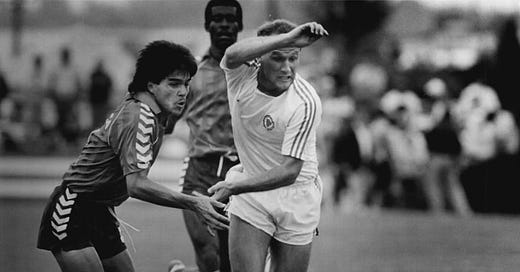Generation Zero - The MISL: A View From a Soccer Traditionalist - Part 2/2
An excerpt from Chapter 8 of Hal Phillips' book about the rise of the US National Team in the 1990s
Click HERE to read Part 1.
We again pass the typewriter over to Hal Phillips, author of Generation Zero: Founding Fathers, Hidden Histories & the Making of Soccer in America, for the 2nd and final installment from Chapter 8 of his book. If you like this excerpt, go buy the book here! And if you’d like to learn more about Hal Phillips, click here!
The Expr…
Keep reading with a 7-day free trial
Subscribe to MISL 1980s: The Story of Indoor Soccer to keep reading this post and get 7 days of free access to the full post archives.





